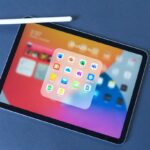
| LAUNCH | Announced | 2018, February |
|---|---|---|
| Status | Available. Released 2018, March |
| BODY | Dimensions | 158.4 x 75.6 x 8 mm (6.24 x 2.98 x 0.31 in) |
|---|---|---|
| Weight | 183 g (6.46 oz) | |
| Build | Front glass, aluminum body (6000 series) with copper edges | |
| SIM | Hybrid Dual SIM (Nano-SIM, dual stand-by) |
| DISPLAY | Type | IPS LCD capacitive touchscreen, 16M colors |
|---|---|---|
| Size | 6.0 inches, 92.4 cm2 (~77.2% screen-to-body ratio) | |
| Resolution | 1080 x 2160 pixels, 18:9 ratio (~403 ppi density) | |
| Multitouch | Yes | |
| Protection | Corning Gorilla Glass 3 |
| PLATFORM | OS | Android 8.1 (Oreo); Android One |
|---|---|---|
| Chipset | Qualcomm SDM660 Snapdragon 660 | |
| CPU | Octa-core (4×2.2 GHz Kryo 260 & 4×1.8 GHz Kryo 260) | |
| GPU | Adreno 512 |
| MEMORY | Card slot | microSD, up to 256 GB (uses SIM 2 slot) |
|---|---|---|
| Internal | 64 GB, 4 GB RAM |
| CAMERA | Primary | Dual: 12 MP (f/1.8, 25mm, 1.4µm) + 13 MP (f/2.6, 1.0µm), gyro EIS, dual pixel phase detection autofocus, 2x optical zoom, Zeiss optics, dual-LED dual-tone flash, check quality |
|---|---|---|
| Features | Geo-tagging, touch focus, face detection, panorama, HDR | |
| Video | 2160p@30fps, 1080p@30fps, check quality | |
| Secondary | 16 MP (f/2.0, 1.0µm), Zeiss optics, 1080p |
| SOUND | Alert types | Vibration; MP3, WAV ringtones |
|---|---|---|
| Loudspeaker | Yes | |
| 3.5mm jack | Yes | |
| – Active noise cancellation with dedicated mic |
| COMMS | WLAN | Wi-Fi 802.11 a/b/g/n/ac, dual-band, WiFi Direct, hotspot |
|---|---|---|
| Bluetooth | 5.0, A2DP, LE | |
| GPS | Yes, with A-GPS, GLONASS, BDS | |
| NFC | Yes | |
| Radio | No | |
| USB | 2.0, Type-C 1.0 reversible connector, USB On-The-Go |
| FEATURES | Sensors | Fingerprint (rear-mounted), accelerometer, gyro, proximity, compass |
|---|---|---|
| Messaging | SMS(threaded view), MMS, Email, Push Email, IM | |
| Browser | HTML5 | |
| – Fast battery charging (18W, 9V/2A) – MP4/H.264 player – MP3/WAV/eAAC+/FLAC player – Photo/video editor – Document viewer |
| BATTERY | Non-removable Li-Ion 3800 mAh battery | |
|---|---|---|
| Stand-by | Up to 723 h (3G) | |
| Talk time | Up to 19 h (3G) | |
| Music play | Up to 126 h |
| MISC | Colors | Black/Copper, White/Copper |
|---|---|---|
| Price | About 400 EUR |
| TESTS | Performance | Basemark OS II: 1612 / Basemark OS II 2.0: 2376 Basemark X: 21063 |
|---|---|---|
| Display | Contrast ratio: 1701:1 (nominal), 3.479 (sunlight) | |
| Camera | Photo / Video | |
| Loudspeaker | Voice 67dB / Noise 71dB / Ring 79dB | |
| Audio quality | Noise -38.8dB / Crosstalk -95.9dB | |
| Battery life |
Endurance rating 87h
|
Introduction
Running out of single-digit numbers in its ever-growing portfolio, the reborn Nokia has started adding words – the high-end Nokia 8 Sirocco is worthy of an iconic moniker from the past, while simpler phones only get a ‘plus’, with a lowercase ‘p’ at that! But the Nokia 7 plus isn’t looking half-bad – capital ‘P’ material at least.
The Snapdragon 660 is certainly as powerful a chip as you can get in the midrange and a dual camera with a telephoto secondary shooter reads like a line from a high-end phone’s specsheet – in fact, it’s the Sirocco’s hardware. The 18:9 display is in keeping with the trends and 1080p is perfectly alright for a 6-incher in this segment. The 3,800mAh battery is more than generous and the bundled 18W quick charger is great for quick top-ups.
Sure to entice Android purists, the Nokia 7 plus is an Android One device. Ours is running 8.1 Oreo with an April 1 security patch – that’s Pixel-level up-to-date.
Nokia 7 plus Specs
- Body: Aluminum body with ceramic-feel coating; 158.4×75.6×8.0mm
- Screen: 6.0-inch, 18:9, FHD+ 2160×1080, IPS LCD, laminated, polarized; Gorilla Glass 3
- Rear Camera: Main 12MP, 1.4µm pixel size, f/1.75 aperture lens; Secondary 13MP, 1.0µm pixel size, 2x Telephoto f/2.6 aperture lens; Dual-tone LED flash, ZEISS optics; 2160p video recording
- Front Camera: 16MP 1.0µm pixel size, f/2.0 aperture lens; 1080p video recording
- Chipset: Qualcomm Snapdragon 660, octa-core CPU (4×2.2 GHz Kryo 260 & 4×1.8 GHz Kryo 26); Adreno 512 GPU
- Memory: 4GB RAM, 64GB, microSD slot (hybrid)
- OS: Android 8.1 Oreo, Android One member
- Battery: 3800mAh, Quick Charge
- Connectivity: Optional dual SIM (4G), Bluetooth 5.0, GPS/GLONASS, Wi-Fi a/b/g/n/ac, NFC, USB Type-C (USB 2.0 spec), 3.5mm jack
- Misc: Rear-mounted fingerprint reader, bottom-firing single speaker, Nokia OZO audio with 3 mics
You know what would have been great? If, like that Pixel 2 XL, the Nokia 7 plus had stereo speakers. Well, unfortunately it doesn’t. Its otherwise superbly built body also lacks waterproofing, but we do have a layman’s grasp of how market segmentation works so we’ll let that slide.
Design and 360-degree spin
The Nokia 7 plus is machined from a single block of 6000-series aluminum – you’re unlikely to miss that fact in Nokia promo materials, but you’ll also feel it you hand. Well, there’s a ‘ceramic-feel coating’ on top, whatever that may be, but you can sense there’s metal in there.
FullHD 6-incher doesn’t impress, doesn’t disappoint either
For the 7 Plus Nokia has opted for a 6-inch IPS display with 1,080×2,160px resolution for pixel density of 403ppi. Aspect ratio is 18:9 and the corners are rounded, so you can say the 7 plus is staying on top of current trends. Well, not as far as protection goes, but Gorilla Glass 3 is still better than nothing (it’s even less scratch prone than 4 and 5, if you ask us, at the expense of shatter proofing).
Nokia 7 plus battery life
The Nokia 7 plus packs quite a sizeable 3,800mAh battery. The usually overly generous folks from Huawei have fitted a 3,750mAh power pack in the Honor View 10, while the Sony Xperia XA2 relies on 3,580mAh.
We ran our usual tests on the Nokia 7 plus and got an overall endurance rating of 87 hours – not bad at all. The individual scores also paint a picture of dependability with more than 11 hours in each of our screen-on tests and 21+ hours of talk time.
The funny thing is that the Xperia XA2 Ultra with its smallest battery can actually outlast both the Nokia handset and the View 10.
Loudspeaker
There’s a single loudspeaker on the Nokia 7 plus, a bottom-firing one. It’s not a record breaker in loudness by any stretch and it falls in the Good category in our test – there are two notches above it. It’s clean and it’s got decent punch in the low end, so not all is lost.
Audio quality
The Nokia 7 Plus didn’t cover itself in fame in the first part of our audio quality test. Its abnormally high intermodulation distortion and poor signal-to-noise ratio mean you won’t be enjoying the best quality when you hook it up to an active external amplifier. Volume was nicely high, but not enough to offset the quality issues.
Headphones fixed both outstanding issues, but caused a few of their own – the stereo crosstalk rose a moderate amount and a tiny bit of intermodulation distortion crept in, while the loudness went from high to just above average. All in all a decent performance with headphones, but hardly one fit to please the most demanding audiophiles.
Android One Eight-point-One
The Nokia 7 plus is part of the Android One program – a boon for anyone that’s a fan of pure Android, but finds the Pixels out of budget (or out of stock). Indeed, the promised timely updates are timely and the unit we’ve had for review is running Oreo 8.1 with the most recent April security patch.
Synthetic benchmarks
The Nokia 7 plus is powered by the Qualcomm Snapdragon 660 chipset – top-of-the-line 600-series silicon with 8 Kryo 260 cores (4×2.2GHz + 4×1.8GHz). Graphics are in the hands of the Adreno 512 GPU. There are 4GB of RAM on board for quick multitasking, and 64GB of storage isn’t bad either.
12MP normal cam plus 13MP telephoto cam
The Nokia 7 plus packs a pair of cameras on its back, the same two cameras you’ll find on the Nokia 8 Sirocco, for the most part. The primary cam is built around a 12MP dual pixel sensor (1.4µm pixel size) behind an f/1.75 aperture lens.
The secondary cam is a telephoto one that delivers 2x optical zoom, even though Nokia doesn’t specify focal lengths. It uses a 13MP sensor, this one with 1.0µm pixels, though it still outputs 12MP images. It’s got a dimmer f/2.6 lens in front.
The lenses carry the Carl Zeiss branding – the collaboration between the two companies goes back more than a decade.
Image quality
Image quality out of the Nokia 7 plus’ main camera in good light is quite good. The resolved detail is on par with other 12MP cameras and and noise isn’t an issue. The phone exposes consistently well, but dynamic range isn’t wide enough to capture (admittedly difficult) high-contrast scenes – both the snail, and the iPhone mural shot have burnt highlights and pitch-black shadows. We do like the Nokia’s colors – saturation’s been nailed just right.
Video quality
The Nokia 7 plus records video up to 2160p. It can obviously also do 1080p, but just at 30fps, there’s no 60fps frame rate option. There’s electronic stabilization, which only works in 1080p (as in, not in 4K) and, like all such implementations, results in a cropped coverage. You can’t turn off the stabilization.
2160p videos are recorded with a bitrate of around 42Mbps – that’s just about the standard number. 1080p clips get around 20Mbps, that’s actually a little more than the average 17Mbps. Audio is recorded in stereo at 256kbps.
4K videos from the main cam come out sharp, detailed, and noise-free. Colors are rendered nicely too. 1080p footage is similarly above average in quality, though we can’t help but think that the always-on stabilization has an adverse effect on absolute sharpness in the instances you can do without it.
Verdict
The Nokia 7 plus leaves the office much like it entered it – without much fuss. We found no issues with it, it cruised through the tests, it delivered in all key areas.
Pros
- Solidly built and good-looking, has the Nokia badge
- Latest OS version as soon as Google puts it out
- Dependable battery life, quick top-ups
- All-round good camera, usable 2x zoom
Cons
- For all its timely updates, vanilla Android is quite barebones
- Display could be brighter





